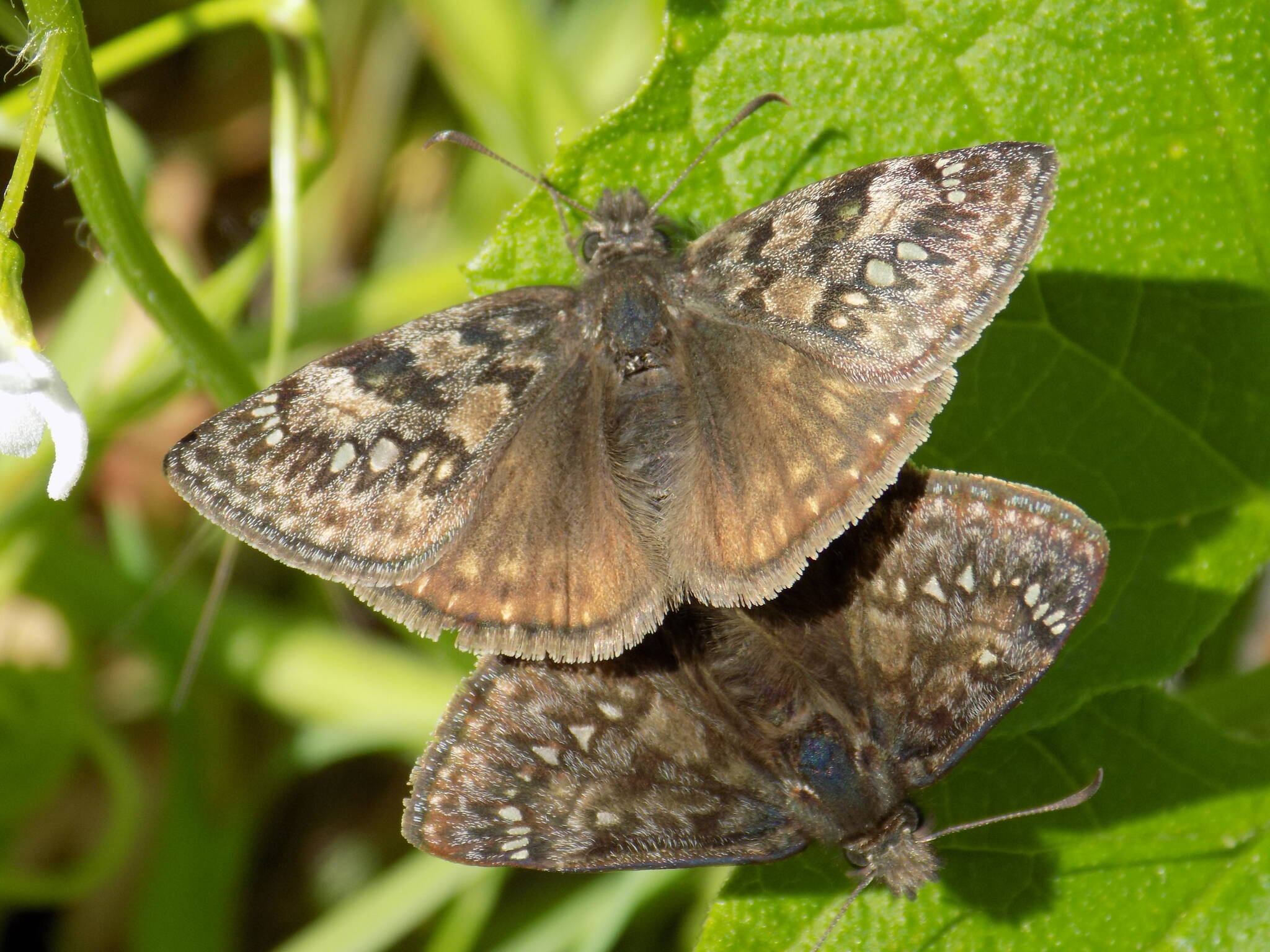Submitted by Russel Barsh, Director of KWIAHT and Journal contributor
The acorns are falling from the huge old oaks on Mount Young, helped by flocks of Band-Tailed Pigeons, and the leaves will soon follow. But rolled up hidden in the leaves is… a rare butterfly.
San Juan Island has a regionally rare, imperiled butterfly that few islanders have seen or recognized. It’s not the Island Marble, a local subspecies or population of the regionally abundant Large Marble, but the Propertius Duskywing (Erynnis propertius), a chocolate-brown skipper found only on the Pacific Coast of North America. It appears to be declining and imperiled in both Washington State and British Columbia, and a large part of the entire Washington state population is here in San Juan County, principally on San Juan Island.
The Duskywing has the dubious distinction of being the only animal species that cannot survive without Garry Oak trees. Adult butterflies, which emerge in May, flutter and mate around oak trees and lay their eggs on oak leaves. The tiny green caterpillars, easily recognized by their pinkish-orange “hats,” eat oak leaves for several weeks, then roll themselves up in leaves to pupate. The leaves fall to the ground in the autumn with the pupae still rolled up inside, dry and safe through winter, awaiting the next spring.
This strategy is very successful for hiding butterfly pupae from bird predators, but not from leaf-blowers, garden rakes, and the human desire for neat lawns.
Duskywings are also threatened by climate change and its impact on the distribution of Garry Oaks, which is expected to shrink over the next century.
Propertius Duskywings depend on large concentrations of oak trees, which are (and for several millennia have been) relatively uncommon in the Salish Sea region. On San Juan Island, an oak-dominated savannah once extended from Oak Ridge to Old Schoolhouse Road, but only scattered clusters of old trees remain. Several dozen old oaks also remain at Mount Young in the National Park, where they support most of the island’s Duskywing population. A few have been seen on the south Turtleback on Orcas Island.
Fifteen years ago, we recorded as many as 50 of these butterflies on a spring day at Mount Young. More recently, there have been fewer than a dozen. It is possible that this was an unintended consequence of prescribed burns aimed at suppressing weeds and recreating the kind of savannah landscape that existed centuries ago. Fires consume leaf litter and with it, pupating Duskywings. In addition, frequent fires have been shown to favor Eurasian grasses at the expense of native wildflowers, reducing the nectar available for adult butterflies as well as bees and other flying insects.
It has been claimed that Duskywings nectar primarily on Blue Camas (Camassia quamash), but at Mount Young, where they typically emerge in mid-May, Duskywings are more eclectic in their choice of flowers. Indeed, wildflowers are where Duskywings from different trees tend to meet and mate! Regionally, the Propertius Duskywing is found mainly on southern Vancouver Island and the Gulf Islands, associated with the largest historical oak-dominated landscapes around the Salish Sea. In Washington, it is known from a half-dozen isolated populations in four counties (Mason, Thurston, Skamania, San Juan), and is classified as a state Species of Greatest Conservation Concern.
While the major part of the San Juan Island Duskywing population is still likely to be in the National Park, small numbers of these butterflies may establish in Garry Oaks elsewhere on the island, and care should be taken not to disturb fallen oak leaves until June; please do not spray, bag or burn!



